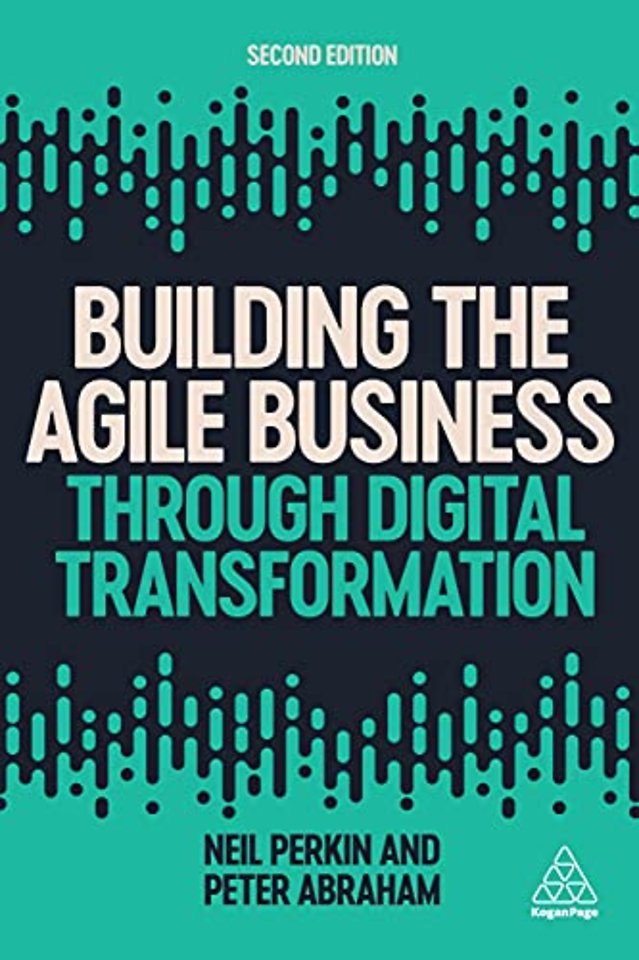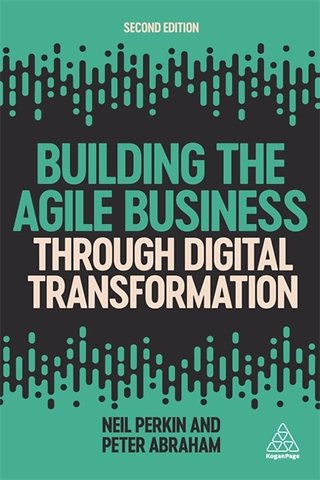Building the Agile Business through Digital Transformation
Paperback Engels 2021 3e druk 9781789666533Samenvatting
How can businesses transform to achieve competitive advantage in a digital-enabled world? How can managers and leaders create a culture that supports lasting change through these transformations?
Building the Agile Business through Digital Transformation is an in-depth guide for all those needing to better understand, implement and lead digital transformation in the workplace. It sets aside traditional thinking and outdated strategies to explain what steps need to be taken for an organization to become truly agile, embed innovation and develop talent to succeed. This majorly revised second edition of Building the Agile Business through Digital Transformation contains new material on the culture and mindset challenges of shifting at scale from linear to agile working, and using data effectively in organizational decision-making.
Full of practical advice, examples and real-life insights from organizations at the leading edge of digital transformation including AirBnb, Amazon and Google, this book is an essential guide to driving success by becoming an agile and digital native business.
Specificaties
Lezersrecensies
Inhoudsopgave
PART ONE
The agile business 1
Introduction 1
How to use this book 2
So what is an agile business? 3
Notes 5
01 The key forces for change 7
Relentless, accelerating change 8
Transformed competitive contexts 9
Transformed consumer contexts 14
Transformed company contexts 15
The key challenge – rates of change 17
Notes 19
02 How digital disrupts 21
The lifecycle of a technology 23
Why businesses get disrupted: the ambiguity zone and agile businesses 24
Notes 26
03 What’s stopping you? 28
Slow by design 28
Looking for opportunity 29
Why organizations become ‘sticky’ 31
Why good ideas become battles 32
The arrogance of scale 35
Protecting against obsolete beliefs and ‘toxic assumptions’ 37
The tyranny of rigid planning 38
Marginal thinking 40
Culture and behaviour 41
Notes 43
04 Defining digital transformation and how an agile business is the foundation for it 46
What good looks like – a maturity model for agile businesses 47
The agile business formula 50
The agile context model 51
Notes 52
PART TWO
Fast 53
Defining fast 53
Working smarter and faster 58
Notes 59
05 Operating in the ‘ambiguity zone’ 61
Being fast through continuous innovation 62
More experimentation = more opportunity 66
Marginal and breakthrough innovation 68
Optimization vs transformation 68
The thermocline of transformation 69
The case for a more iterative, emergent approach 70
The problem with waterfall 71
The three types of problem in the world 73
Complex scenarios require emergent solutions 75
Notes 76
06 Agile and adaptive methodology 79
Design thinking 79
Agile 80
Lean 83
The principles of agile business 85
Developing a learning culture 86
The dangers of systematic survival bias 89
Learning to unlearn 90
Fixed and growth mindsets 90
Embedding reflection time 91
Notes 94
07 The agile innovation process 97
Empowering invention 97
Rewiring business models with an asset-light or asset-heavy approach 105
Possible futures 107
Ingrained commercialization 112
Scaling, the digital-native way 117
Acquisition as a path to growth 122
Building supporting evidence and getting up to speed fast 123
Key takeouts 124
Notes 127
PART THREE
Focused 133
Defining focus 133
Notes 137
08 The role of vision and purpose 139
The organizing idea, purpose and vision 139
The link between purpose and profit 141
Taking the long view 142
Notes 145
09 Agile strategy and planning 147
The key to good strategy 147
Emergent and deliberate strategy 149
The balance between vision and iteration 150
The impact of plan continuation bias 152
Bias to action 155
The customer-centric organization 156
Agile business maturity 159
‘P’ is for prioritization 162
Strategy as an ever-changing algorithm 167
Discovery-driven planning 169
Notes 170
10 Linking strategy to execution 175
The five questions 175
Strategy and tactic trees 177
OKRs – bringing the team with you 178
Sprint working as a driver of change 180
Agile planning cascades and cadence 182
Dealing with blockers – using current reality trees 184
Complexity bias and looking for answers in the wrong places 186
DIKW: a foundational approach to value from data 192
Technology as a barrier to change 193
Technology as an enabler of change 194
Agile budgeting 196
Key takeouts 199
Notes 200
PART FOUR
Flexibility 203
Defining flexibility 203
Notes 205
11 Agile structures and resourcing 207
Concurrent running, co-located working 209
The insourcing and outsourcing dynamic 212
Centralization vs decentralization, specialists and generalists 214
The power of small teams to drive big change 215
Two-pizza teams 218
Self-organizing, multidisciplinary teams 219
The composition of multidisciplinary teams 221
Small teams and resource dynamism 222
Notes 223
12 Scaling agility 225
Managing core teams and dependencies 229
Aligning multidisciplinary teams 232
Getting the right mix – pioneers, settlers, town planners 234
Agile decision-making – flatter structures, quicker decisions 238
Agile governance and the digital board 240
Notes 241
13 Building the culture to move fast 243
Agile is not just a process, it defines a culture 243
What is digital-native culture? 244
The right culture helps you to move fast 248
What really differentiates high-performing teams? 249
Creating the culture for real collaboration 252
Learning opportunities 254
Learning fast: see one, do one, teach one 255
The importance of trust and ‘productive informality’ 256
Read my user manual 257
Notes 258
14 A blueprint for flexibility: autonomy, mastery and purpose 262
Our massive employee engagement problem 262
Mapping strategy and culture to motivation 263
Autonomy 264
Mastery 266
Purpose 269
Notes 270
15 Digital-native talent 272
Hiring smart 272
Peacocks, penguins and pie bakers 274
Redefining effective leadership for the digital age 275
Key takeouts 276
Notes 277
PART FIVE
Start small, scale fast and the transformation journey – putting it all together 279
The five dimensions of change 281
Dimension one: personal 281
Dimension two: principles 289
Dimension three: process 294
Dimension four: practice 298
Dimension five: pace 304
Staying agile 308
What now? 313
Notes 313
Index 316
Anderen die dit boek kochten, kochten ook
Rubrieken
- advisering
- algemeen management
- coaching en trainen
- communicatie en media
- economie
- financieel management
- inkoop en logistiek
- internet en social media
- it-management / ict
- juridisch
- leiderschap
- marketing
- mens en maatschappij
- non-profit
- ondernemen
- organisatiekunde
- personal finance
- personeelsmanagement
- persoonlijke effectiviteit
- projectmanagement
- psychologie
- reclame en verkoop
- strategisch management
- verandermanagement
- werk en loopbaan







